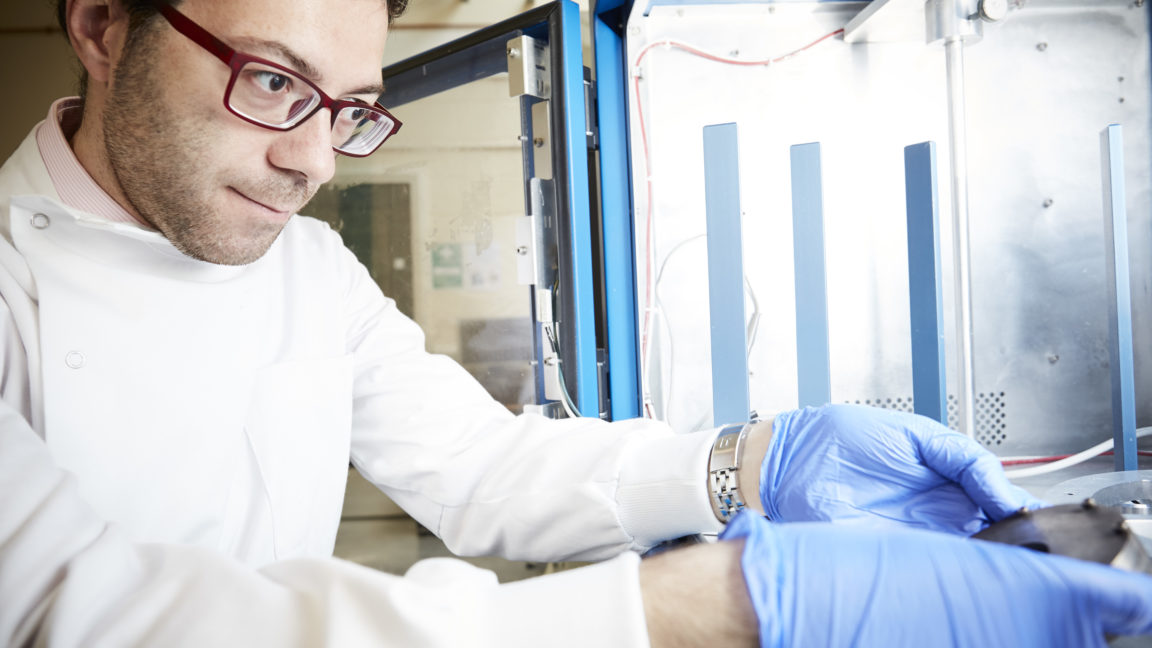Dual-action dressing to help diabetic wounds
A new type of wound dressing that can both manage infection and promote healing is being investigated thanks to Grow MedTech funding.
University of Leeds Lecturer in Healthcare Materials, Dr Giuseppe Tronci, will use the Proof of Feasibility grant to combine his patented collagen dressing, proven to boost the healing process, with a chemical that has antibacterial properties when activated by light.
Reducing antibiotics
The aim is to reduce the need for antibiotics and help improve wound management, particularly for diabetic patients. People with diabetes can suffer from nerve damage and reduced circulation which makes them more prone to developing wounds that are slow to heal and more likely to turn into chronic ulcers. The NHS currently spends nearly £1 billion a year on diabetic wound management, and the number of people with diabetes in the UK is set to rise to over five million by 2025.
The collagen dressing, called HyFaCol, was developed by Dr Tronci and colleagues with support from the Medical Technologies Innovation and Knowledge Centre and MeDe Innovation and is set to enter clinical trials. Using the new Grow MedTech funding, Dr Tronci will look to add additional capability to the HyFaCol dressing by encapsulating a photosensitive dye – already in clinical use – into its fibres. The dye is toxic to bacteria when activated by light and Dr Tronci plans to test whether it has the same action once part of the dressing, while not harming human cells.
Dr Tronci said: “The way the dressing and the dye are combined is vital. We need the light to reach the dye to activate its antibacterial function and then we need the dye to be able to act on the wound without leaching out and staining the surrounding tissue. This funding will allow us to show whether this is possible, before we move forward to create a dual-function dressing.”
Effective collaboration
Dr Tronci has already teamed up with clinical and commercial partners for the project. These collaborations will ensure that the research focuses on production methods that can be easily scaled up through existing manufacturing routes and that clinical needs are being addressed at an early stage.
“We hope that, if we can show that the technology is feasible during this six-month project, we are then in a good position to move quickly towards first-in-human trials,” said Dr Tronci.

